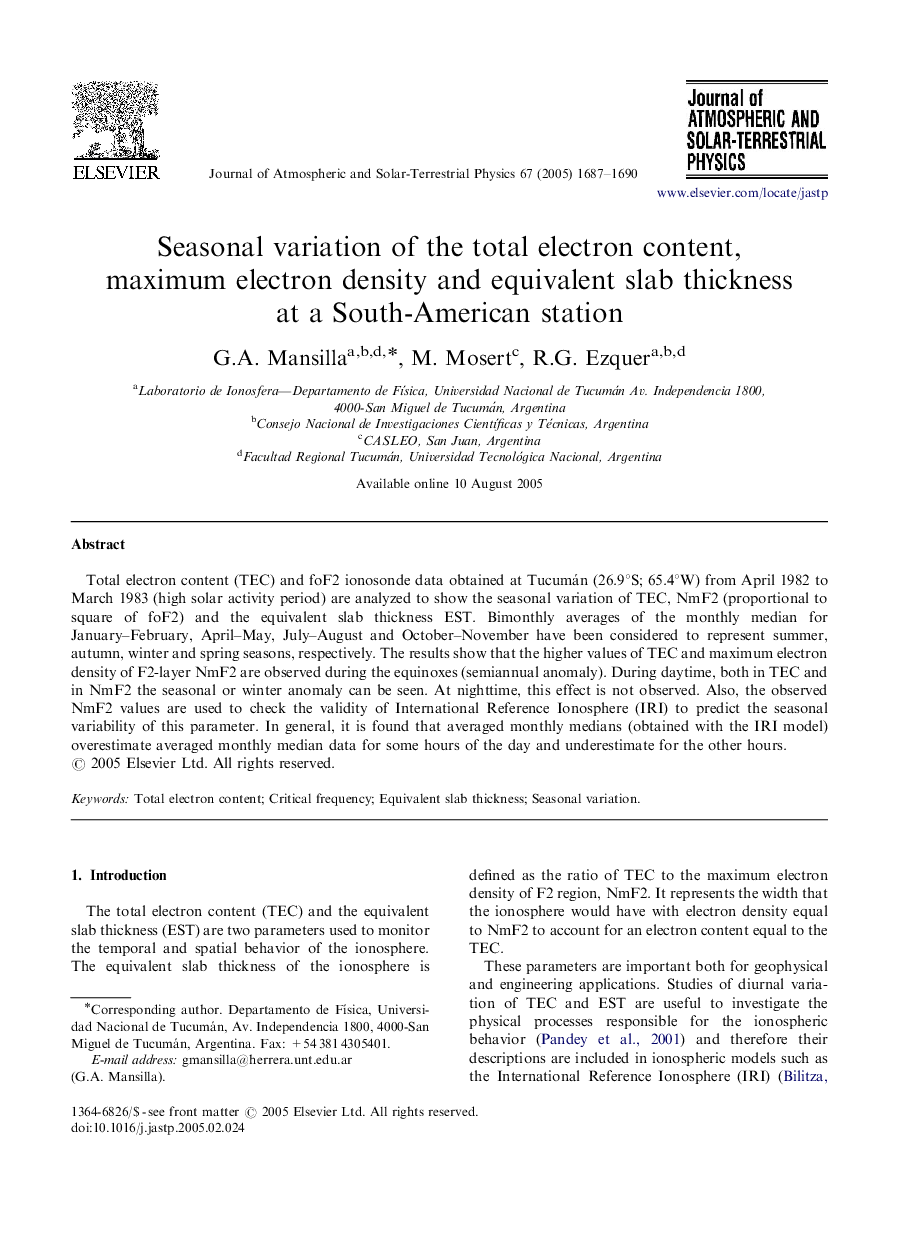| Article ID | Journal | Published Year | Pages | File Type |
|---|---|---|---|---|
| 9827668 | Journal of Atmospheric and Solar-Terrestrial Physics | 2005 | 4 Pages |
Abstract
Total electron content (TEC) and foF2 ionosonde data obtained at Tucumán (26.9°S; 65.4°W) from April 1982 to March 1983 (high solar activity period) are analyzed to show the seasonal variation of TEC, NmF2 (proportional to square of foF2) and the equivalent slab thickness EST. Bimonthly averages of the monthly median for January-February, April-May, July-August and October-November have been considered to represent summer, autumn, winter and spring seasons, respectively. The results show that the higher values of TEC and maximum electron density of F2-layer NmF2 are observed during the equinoxes (semiannual anomaly). During daytime, both in TEC and in NmF2 the seasonal or winter anomaly can be seen. At nighttime, this effect is not observed. Also, the observed NmF2 values are used to check the validity of International Reference Ionosphere (IRI) to predict the seasonal variability of this parameter. In general, it is found that averaged monthly medians (obtained with the IRI model) overestimate averaged monthly median data for some hours of the day and underestimate for the other hours.
Related Topics
Physical Sciences and Engineering
Earth and Planetary Sciences
Geophysics
Authors
G.A. Mansilla, M. Mosert, R.G. Ezquer,
